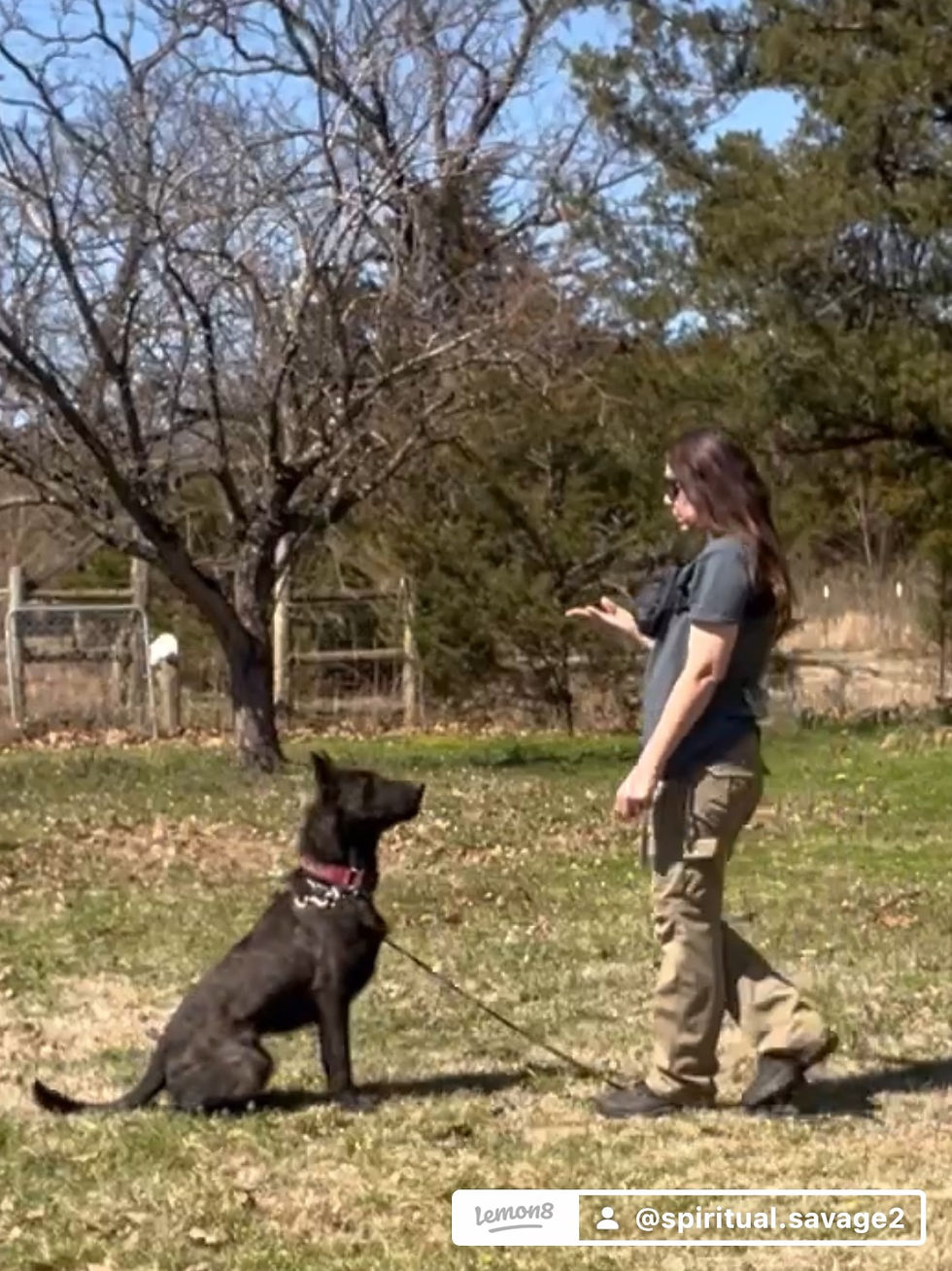
Top Reasons You Need Both Basic & Advanced Obedience Training with Dutch Shepherd Pups!
- Jennifer O’Neil
- Aug 21, 2024
- 4 min read
Updated: Oct 30, 2024
The Difference Between Basic and Advanced Obedience Training for Dutch Shepherds: From 9 Weeks to 24 Weeks
Training a Dutch Shepherd from a young age is crucial in shaping a well-behaved, obedient, and confident dog. As your pup progresses from basic to advanced obedience, you'll notice significant differences in their skills, behavior, and overall responsiveness. Understanding these differences and the importance of continuing with advanced training after mastering the basics will help you provide the best foundation for your Dutch Shepherd.
Basic Obedience Training: 9 Weeks to 16 Weeks
What It Covers: Basic obedience training typically starts when your Dutch Shepherd is around 9 weeks old. During this phase, the focus is on establishing foundational commands and behaviors. The primary goals of basic obedience are to teach your pup how to respond to basic commands and to develop a bond of trust and communication between you and your dog.
Key Skills Taught:
Sit: Teaching your pup to sit on command is one of the first and most essential obedience skills.
Stay: Your dog learns to remain in a sitting or lying position until released.
Come: Recall training helps your pup understand how to return to you when called, even in distracting environments.
Heel: Walking calmly on a leash without pulling or lagging behind is a critical skill for Dutch Shepherds, who are naturally energetic.
Place: This command teaches your dog to go to a specific spot, such as a mat or bed, and stay there until released.
Behavioral Focus:
Socialization: Basic obedience also involves socializing your Dutch Shepherd with other dogs, people, and various environments. This helps them become well-adjusted and reduces the likelihood of fear or aggression issues later on.
Impulse Control: Early training helps your pup learn to control impulses, such as jumping, barking, and mouthing.
Outcome of Basic Training: By the end of basic obedience training, usually around 16 weeks, your Dutch Shepherd should have a solid understanding of basic commands and be well-socialized. They will have developed good leash manners and will be responsive to simple commands in controlled environments. However, they may still struggle with distractions and off-leash situations, which is where advanced training comes in.
Advanced Obedience Training: 16 Weeks to 24 Weeks
What It Covers: Advanced obedience training builds on the foundation laid during basic training and introduces more complex commands and behaviors. It typically begins around 16 weeks and continues until 24 weeks or beyond. The focus shifts from basic commands to fine-tuning your dog’s obedience, even in challenging and distracting environments, and preparing them for off-leash reliability.
Key Skills Taught:
Off-Leash Commands: Advanced obedience includes training your Dutch Shepherd to respond to commands without the need for a leash, even in the presence of distractions.
Advanced Recall: The recall command is reinforced and practiced in increasingly distracting situations, ensuring your dog will return to you reliably.
Distance Commands: Your dog learns to respond to commands such as “sit,” “stay,” and “down” from a distance, without the need for close physical proximity.
Long-Duration Stays: In advanced training, your dog learns to hold the “stay” command for extended periods, even when you are out of sight.
Heel with Distractions: The “heel” command is perfected so your dog can walk calmly beside you in highly distracting environments, such as busy streets or crowded parks.
Advanced Socialization: Continued socialization in more challenging settings ensures your dog remains calm and well-behaved around other dogs, people, and unfamiliar environments.
Behavioral Focus:
Impulse Control in High-Distraction Environments: Advanced training teaches your Dutch Shepherd to maintain focus and obedience even in situations that would typically provoke excitement or stress.
Confidence and Reliability: As your dog masters advanced commands, they become more confident and reliable in their responses, making them trustworthy in off-leash situations.
Outcome of Advanced Training: By the end of advanced obedience training, your Dutch Shepherd should be able to perform commands off-leash, maintain focus in highly distracting environments, and demonstrate reliable obedience in any situation. This level of training is particularly important for Dutch Shepherds, who are known for their high energy and drive. Advanced training helps channel these traits into positive behaviors, reducing the risk of problem behaviors such as excessive barking, jumping, or chasing.
The Need for Advanced Training After Basic
Why Advanced Training is Essential:
Enhanced Control and Safety: Advanced training provides you with greater control over your Dutch Shepherd, especially in potentially dangerous situations. A well-trained dog is less likely to run into traffic, chase after other animals, or engage in other risky behaviors.
Off-Leash Freedom: Many owners dream of enjoying off-leash walks and playtime with their dogs. Advanced training makes this possible by ensuring your dog will return to you and obey commands even without a leash.
Behavioral Refinement: While basic training lays the groundwork, advanced training refines your dog’s behavior, making them more responsive, attentive, and reliable. This is particularly important for Dutch Shepherds, who are known for their intelligence and work ethic.
Strong Owner-Dog Bond: The process of advanced training strengthens the bond between you and your dog. As you work together to overcome more challenging tasks, your relationship deepens, leading to a more fulfilling companionship.
Conclusion: Investing in both basic and advanced obedience training for your Dutch Shepherd is crucial for developing a well-rounded, well-behaved, and happy dog. While basic training establishes the foundation, advanced training takes your dog’s skills to the next level, ensuring they can handle any situation with confidence and reliability. For Dutch Shepherds, who thrive on mental and physical stimulation, advanced obedience is not just an option—it’s a necessity.






Comments